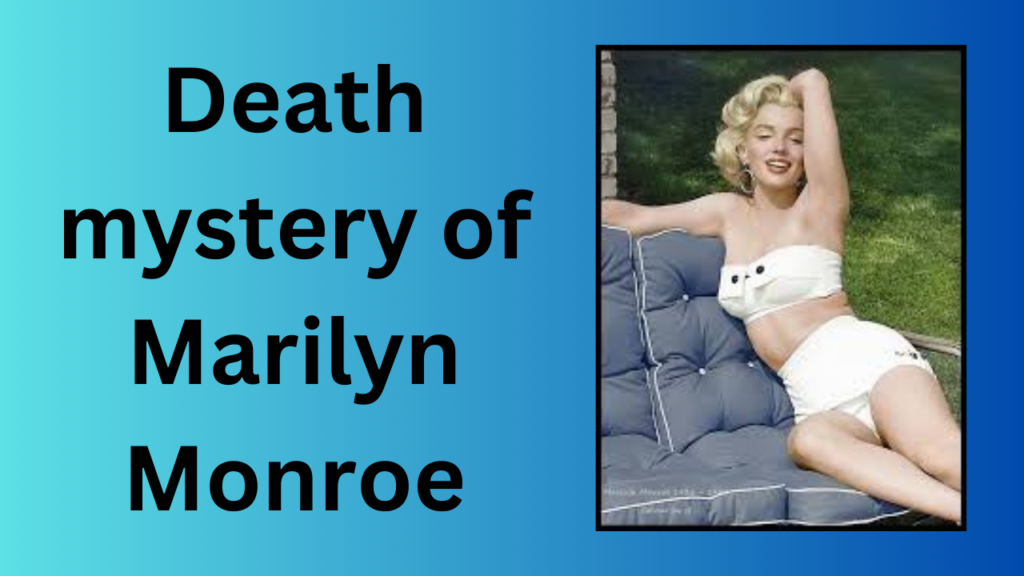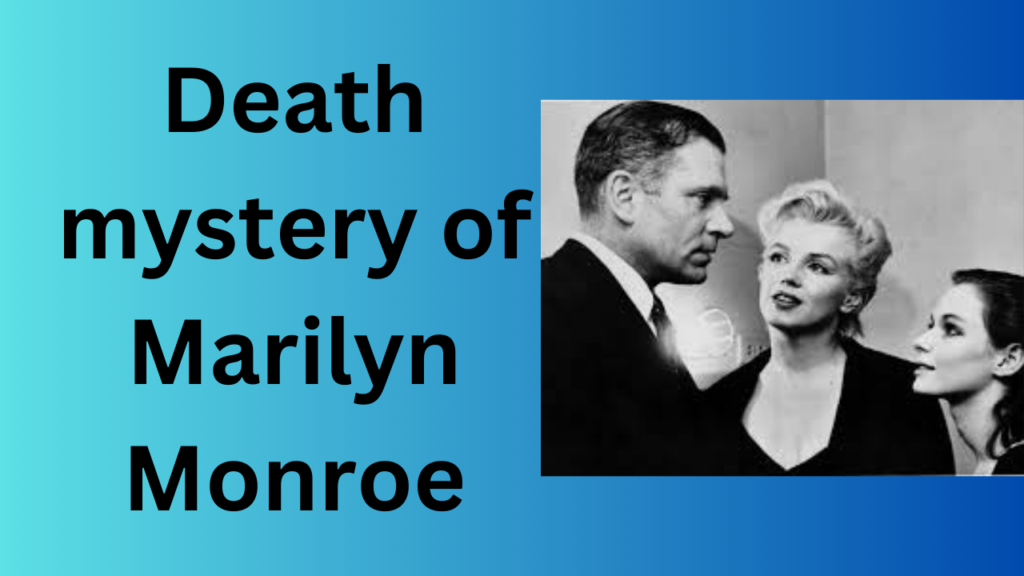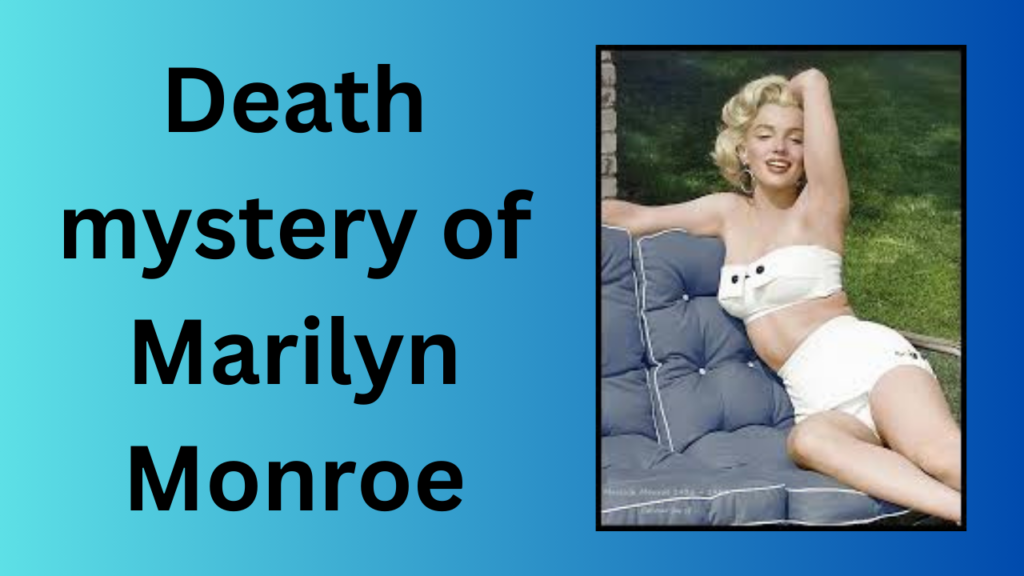
Table of Contents
Marilyn Monroe: The Woman Behind the Legend
Mystery Death of Marilyn Monroe, was not just a Hollywood star; she was a cultural icon whose life was marked by both dazzling success and heartbreaking tragedy. Born as Norma Jeane Mortenson on June 1, 1926, her journey from a troubled childhood to the pinnacle of fame encapsulates the triumphs and tribulations of human ambition. Her untimely death at the age of 36 remains one of the most debated mysteries in modern history. This article delves into the life, loves, struggles, and legacy of Marilyn Monroe with a focus on the woman behind the myth.
Early Life: The Roots of Vulnerability
Norma Jeane’s life began in Los Angeles, California, under circumstances far from ideal. Her mother, Gladys Pearl Baker, worked as a film cutter but struggled with severe mental health issues. Norma Jeane never knew her father, and her mother’s instability meant she spent much of her childhood in foster homes and orphanages.
A child of instability, Norma Jeane longed for a sense of belonging and love. She was sent to live with various foster families and even spent time in an orphanage, which left an indelible mark on her psyche. Despite these challenges, she demonstrated remarkable resilience. She was an avid reader, finding solace in books, and began to develop dreams of a brighter, more stable future.
At just 16, to escape the cycle of foster care, Norma Jeane married James Dougherty, a neighbor. The marriage offered her some semblance of stability but was ultimately short-lived. James enlisted in the military during World War II, and the couple grew apart.

A Star is Born: Marilyn’s Early Career
While working in a factory during the war, Norma Jeane’s life took an unexpected turn. A photographer scouting for models spotted her and was captivated by her radiant beauty. This chance encounter launched her career as a pin-up model. By 1946, she had signed her first movie contract with 20th Century Fox, adopting the stage name Marilyn Monroe—a name that would soon become legendary.
The transformation from Norma Jeane to Marilyn Monroe wasn’t merely a change of name; it was a complete reinvention. She dyed her hair platinum blonde and began cultivating the sultry image that would define her career. But behind the glamour was a young woman grappling with self-doubt and an insatiable need for acceptance.
The Hollywood Phenomenon
Marilyn’s rise to fame was meteoric. By the early 1950s, she had starred in films like Niagara (1953), Gentlemen Prefer Blondes (1953), and How to Marry a Millionaire (1953). Her performance in Gentlemen Prefer Blondes, where she famously sang “Diamonds Are a Girl’s Best Friend,” cemented her status as Hollywood’s ultimate “blonde bombshell.”
While her sex symbol image brought her fame, it also typecast her in roles that focused more on her looks than her talent. Marilyn yearned for more substantial roles that would allow her to prove herself as a serious actress. She moved to New York in the mid-1950s and began studying acting under Lee Strasberg at the Actors Studio. This period of personal and professional growth led to acclaimed performances in films like Bus Stop (1956) and Some Like It Hot (1959), the latter earning her a Golden Globe Award.

Personal Life: Love, Longing, and Loss
Marilyn’s personal life was as tumultuous as her professional one. Her relationships were often shaped by her need for emotional security—a need rooted in her unstable childhood.
- Joe DiMaggio:
In 1954, Marilyn married baseball legend Joe DiMaggio. Their union was one of the most high-profile relationships of its time, capturing the imagination of fans worldwide. However, the marriage was short-lived, lasting just nine months. DiMaggio’s jealousy over Marilyn’s public image and his traditional expectations clashed with her fiercely independent spirit. Despite their divorce, DiMaggio remained deeply loyal to Marilyn, even arranging for roses to be placed at her grave weekly for 20 years. - Arthur Miller:
Marilyn’s third marriage, to renowned playwright Arthur Miller in 1956, represented her desire for intellectual fulfillment. She immersed herself in Miller’s literary world, seeking validation beyond her physical allure. Yet, their relationship was strained by Marilyn’s insecurities and Miller’s inability to understand the depth of her emotional struggles. They divorced in 1961. - Rumored Affairs:
Marilyn was romantically linked to several high-profile figures, including President John F. Kennedy and his brother Robert Kennedy. These alleged relationships have fueled countless conspiracy theories surrounding her death.

Contributions and Cultural Impact
Marilyn Monroe wasn’t just a movie star; she was a trailblazer who redefined the role of women in Hollywood.
- Empowering Women in Hollywood:
Dissatisfied with the roles being offered to her, Marilyn took control of her career by founding her own production company, Marilyn Monroe Productions, in 1955. This was a bold move at a time when women in the industry had little autonomy. - Humanitarian Efforts:
Marilyn was an advocate for orphaned children, often visiting orphanages and donating to charities. Her empathy for vulnerable children stemmed from her own experiences growing up without a stable family.
The Tragic End
On August 5, 1962, Marilyn Monroe was found dead in her Brentwood, California, home. She was only 36 years old. The official cause of death was ruled as a probable suicide due to an overdose of barbiturates. However, the circumstances surrounding her death remain shrouded in mystery.
- The Official Narrative:
Marilyn had struggled with depression and substance abuse for years. She was also reportedly battling the pressures of Hollywood and the emotional fallout from her failed relationships. - Conspiracy Theories:
- Kennedy Connection: Many speculate that Marilyn’s alleged affairs with the Kennedy brothers led to her death. Some believe she was silenced to protect sensitive political information.
- Hollywood Cover-Up: Others suggest her death was orchestrated by powerful figures in Hollywood who sought to preserve their interests.
- Accidental Overdose: Another theory posits that her death was accidental, caused by a combination of prescription drugs and a lack of proper medical supervision.
- Inconsistencies:
Several inconsistencies in the timeline of events, missing phone records, and conflicting witness statements have fueled suspicions of foul play.

The Loss to the World
Marilyn Monroe’s death was not just a loss to Hollywood; it was a loss to the world. She was more than a movie star; she was a symbol of resilience, vulnerability, and ambition.
For many, Marilyn represented the complexities of fame—the highs of adoration and the lows of isolation. Her life exposed the darker side of Hollywood, where stars are often commodified and discarded once they’ve outlived their perceived utility.
Her absence left an irreplaceable void. Marilyn’s potential as an actress, activist, and human being was never fully realized. She could have continued to challenge stereotypes, advocate for social issues, and inspire future generations.
Legacy
Today, Marilyn Monroe remains an enduring icon. Her image graces everything from art to fashion, and her life story continues to inspire books, films, and documentaries. She is remembered not just for her beauty but for her humanity—her struggle for self-worth, her pursuit of love, and her desire to leave a mark on the world.
Marilyn Monroe’s life and death remind us that even the brightest stars can face the deepest darkness. She was a woman of depth, intelligence, and complexity, whose legacy transcends the screen to touch the hearts of those who see her for who she truly was—a vulnerable soul who dreamed of a world where she could be loved for more than just her looks.
If you’d like additional details or adjustments, feel free to let me know!
